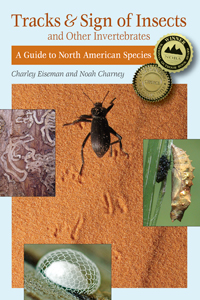This may be a pretty generic-looking gall wasp (Cynipidae), but it has an interesting history. My first visit to Nantucket, in September 2011, was an intensive four-day survey with Noah Charney and Sydne Record in which we documented as many different species of gallmakers and leafminers as we could. At Coskata Woods, a remote site full of mosquitoes and poison ivy but which I’ve nevertheless always found to be a worthwhile place to visit, Noah picked up a white oak (Quercus alba) twig that had fallen to the ground at some point during the growing season; the leaves were fully formed but dead and brown. There were at least three different types of galls on these few leaves, one of which was this one:
This gall is a good match for the one caused by Andricus quercuspetiolicola, which forms in early spring on various trees of the white oak group and is described as an abrupt enlargement at the base of the leaf blade. I snipped the different galls out of the leaves and put them in separate vials. A parasitoid wasp (Eurytomidae) emerged from one of the other galls within two weeks, but at the end of the year nothing had emerged from this one. I kept it for another whole year, but still nothing. For whatever reason, I still didn’t throw it away, even though it was a pretty sorry-looking gall to begin with and I had been skeptical that it was viable when Noah collected it.
On May 19 of this year, this wasp emerged–a full two years after the gall formed. It is actually not uncommon for cynipids to lie dormant in their galls for two or more winters, which is one of many things that makes them difficult to study. I don’t believe Andricus quercuspetiolicola is one of the species that does this though–adults of this species should have chewed their way out of the gall in June or July of 2011–and I think this wasp was an inquiline or “guest” in the gall. This is just as well, since I already knew who the gallmaker was, and the inquiline will likely turn out to be a new species for the island once I get it identified (if it is, in fact, possible to put a species name on it). It does make me wonder, though, how I can ever know when it’s time to give up on a wasp gall and throw it away.






Hi Charley,
I find your posts COMPLETELY fascinating – though there is never anything to comment on – except Thank You!! 🙂
You’re welcome! I’m glad you’re enjoying them.
Charley,
Your information, observations and book are truly fascinating! Relative to this wasp, it’s been my observation that the wasp damage is predominantly on the black and red oaks and frankly, I have not seen it on white oak.
Hi Kristin,
I suspect you are referring to the galls of Callirhytis tumifica, which are found on red, black, and scarlet oak.
Thanks for the clarification and the link!